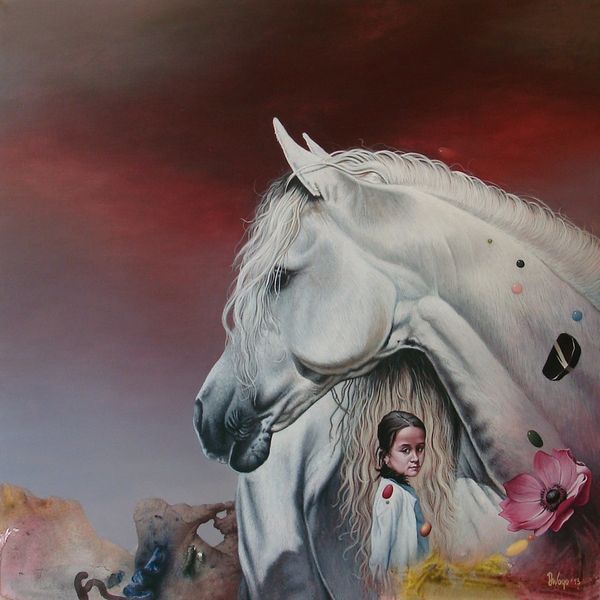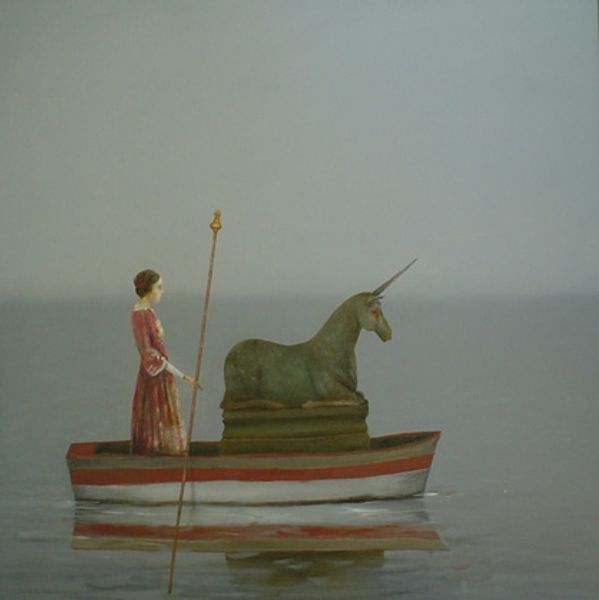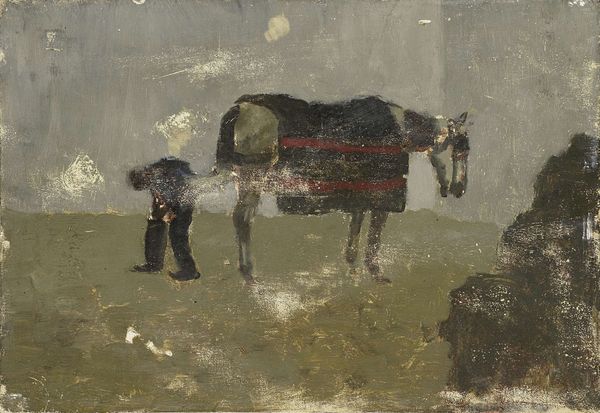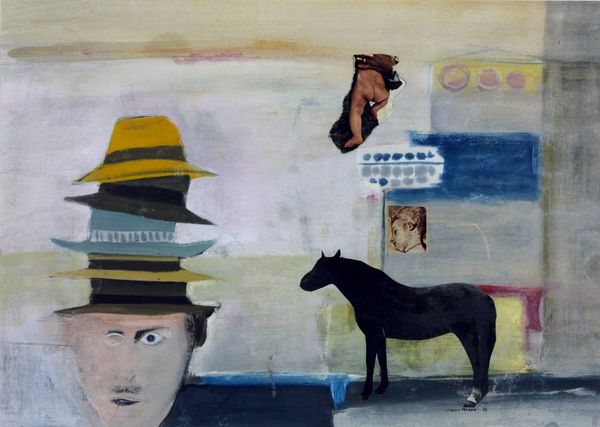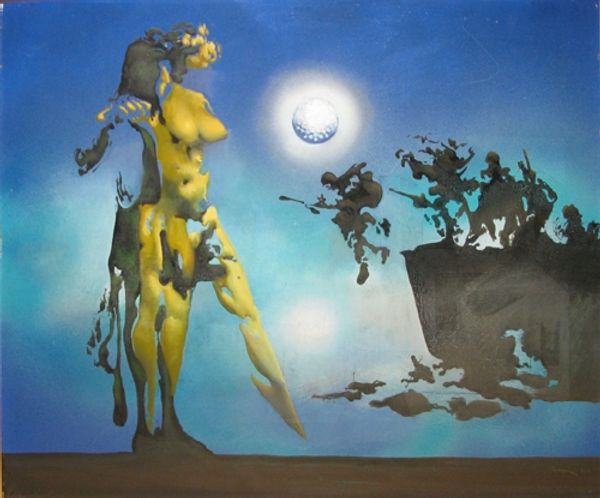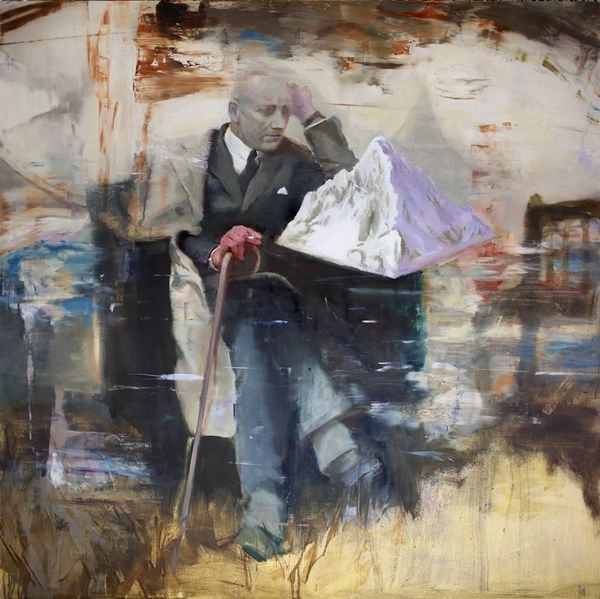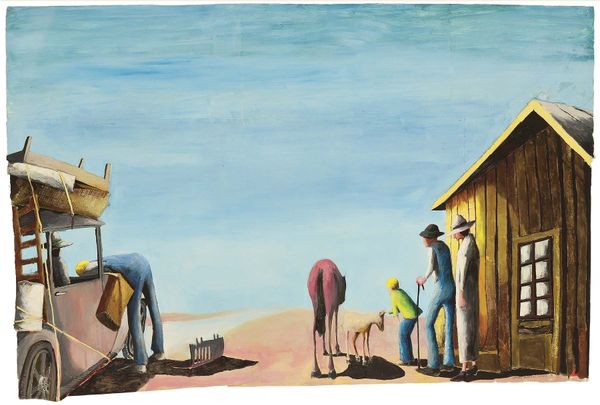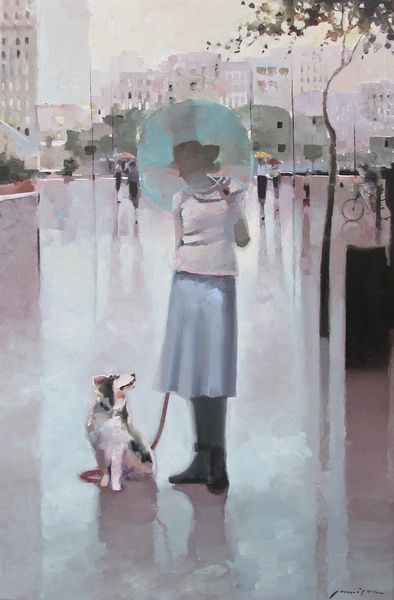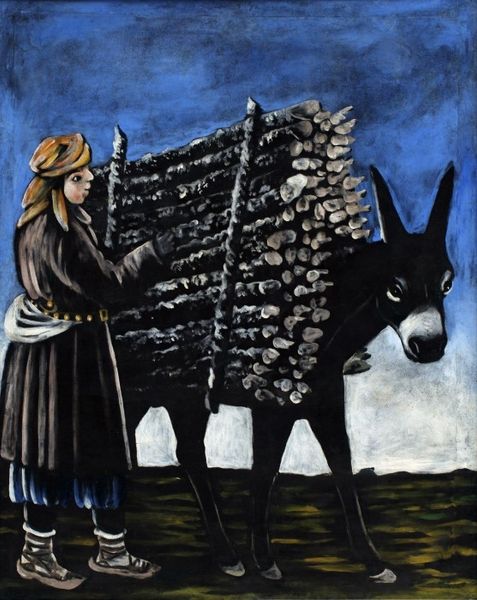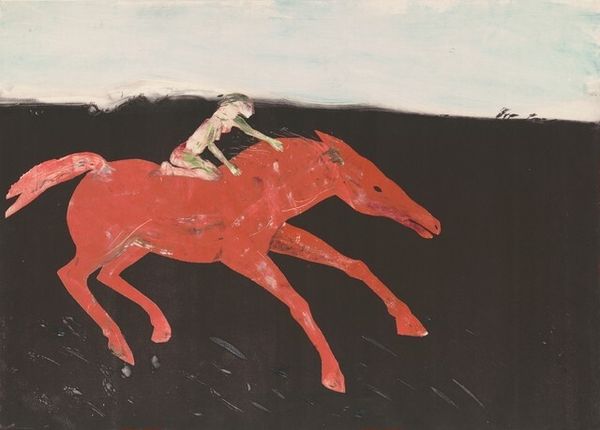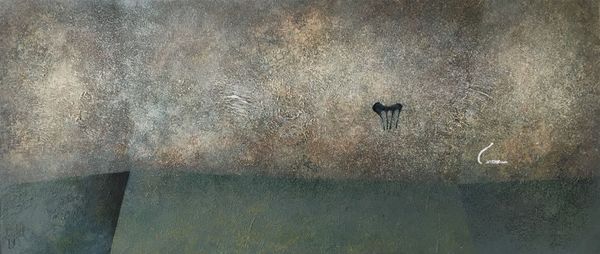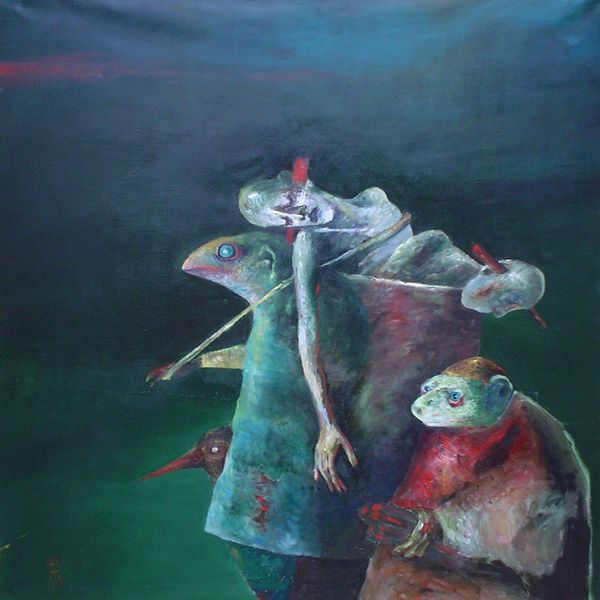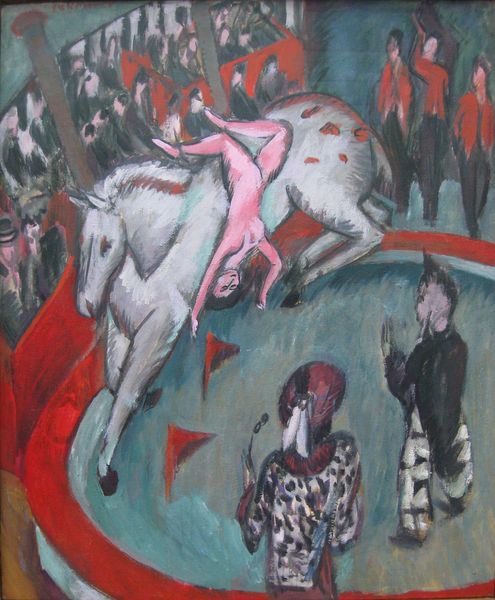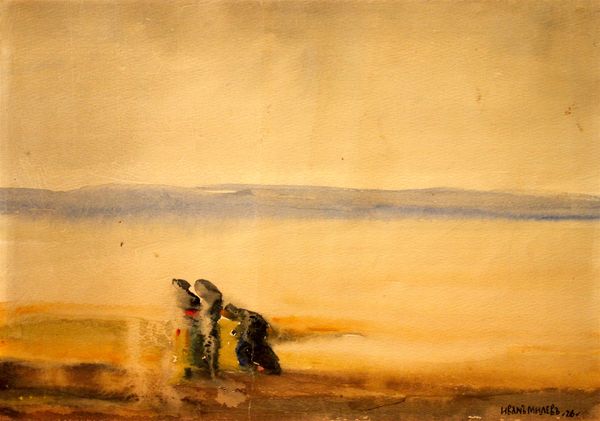
painting, acrylic-paint
#
gouache
#
contemporary
#
acrylic
#
narrative-art
#
painting
#
landscape
#
fantasy-art
#
acrylic-paint
#
figuration
#
oil painting
#
watercolour illustration
#
modernism
#
watercolor
Copyright: Stefan Caltia,Fair Use
Curator: Stefan Caltia's "The Journey of the Second Unicorn," painted in 2005 using acrylic and gouache, invites us into a somewhat melancholic fantasy landscape. What's your initial impression? Editor: It's...strange, and rather muted. The colours feel intentionally desaturated. I notice the flat planes and simplified figures - the little girl, the solemn woman in a long dress, and especially that forlorn-looking unicorn on the cart. It definitely evokes a sense of journey, perhaps one filled with hardship. Curator: Hardship definitely resonates. The painting reminds me of narratives where marginalized figures, especially women and children, are tasked with navigating a harsh, often indifferent world, freighted with societal expectations and the burdens of heritage, even mythological ones, like the unicorn here, seems like an exploited natural resource or cultural symbol being reduced into mere commodity. Editor: Yes, that exploitation, I believe, permeates everything in our reading. How else do we understand the journey that’s implied by its very title? From my view, knowing Caltia's body of work, the dreamlike quality juxtaposed with a realistic depiction creates an atmosphere ripe with allegory, referencing, say, Romanian society’s political transition. It looks at those often affected most – women, children, carrying symbolic burdens that perhaps no one sees fully. Curator: I absolutely agree on the political implications within that fantasy framework. Caltia's deployment of traditional artistic tropes – the journey, the mythical beast, the isolated figures – serves as a potent critique of power structures and societal expectations. His artistic interventions serve to question the accepted order through a feminist lens. Editor: It brings to mind, then, that, too often, the political realm tends to co-opt what's deemed valuable at a given time, whether a real animal, symbolic icon, and exploit those very things to shore up existing paradigms. It feels like the subjects in this work find themselves bound by and perhaps struggling against that commodification. Curator: Precisely, the lack of dynamism, those slightly downturned faces, evoke a deep melancholy and challenge that appropriation. The figures in "The Journey of the Second Unicorn" silently yet powerfully reclaim their narrative and invite critical interrogation of societal forces impacting those narratives. Editor: It's almost like witnessing a procession frozen in time. Makes you wonder about the unspoken dialogues between art and societal anxieties, doesn't it? I hope that this reflection makes you, as a viewer, reflect and revisit the power dynamic wherever that exists. Curator: Beautifully said. May this reading bring an alternative lens when you view any form of art in order to engage in art that facilitates political action and emancipation for historically underserved communities.
Comments
No comments
Be the first to comment and join the conversation on the ultimate creative platform.
